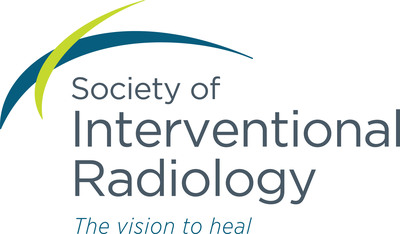Society Of Interventional Radiology Release: Image-Guided Treatment Shown To Break The Migraine Cycle
ATLANTA, March 1, 2015 /PRNewswire-USNewswire/ -- An innovative interventional radiology treatment has been found to offer chronic migraine sufferers sustained relief of their headaches, according to research being presented at the Society of Interventional Radiology's Annual Scientific Meeting. Clinicians at Albany Medical Center and the State University New York Empire State College in Saratoga Springs used a treatment called image-guided, intranasal sphenopalatine ganglion (SPG) blocks to give patients enough ongoing relief that they required less medication to relieve migraine pain.

"Migraine headaches are one of the most common, debilitating diseases in the Unites States, and the cost and side effects of medicine to address migraines can be overwhelming," said Kenneth Mandato, M.D., the study's lead researcher and an interventional radiologist at Albany Medical Center. "Intranasal sphenopalatine ganglion blocks are image-guide, targeted, breakthrough treatments. They offer a patient-centered therapy that has the potential to break the migraine cycle and quickly improve patients' quality of life," he added.
Mandato and his team conducted a retrospective analysis of 112 patients suffering migraine or cluster headaches. Patients reported the severity of their headaches on a visual analogue scale (VAS), ranging from 110, to quantify the degree of debilitation experienced from the migraine. During the treatment, which is minimally invasive and does not involve needles touching the patient, researchers inserted a spaghetti-sized catheter through the nasal passages and administered 4 percent lidocaine to the sphenopalatine ganglion, a nerve bundle just behind the nose associated with migraines.
Before treatment, patients reported an average VAS score of 8.25, with scores greater than 4 at least 15 days per month. The day after the SPG block patients' VAS scores were cut in half, to an average of 4.10. Thirty days after the procedure, patients reported an average score of 5.25, a 36 percent decrease from pretreatment. Additionally, 88 percent of patients indicated that they required less or no migraine medication for ongoing relief.
"Administration of lidocaine to the sphenopalatine ganglion acts as a 'reset button' for the brain's migraine circuitry," noted Mandato. "When the initial numbing of the lidocaine wears off, the migraine trigger seems to no longer have the maximum effect that it once did. Some patients have reported immediate relief and are making fewer trips to the hospital for emergency headache medicine," he said. Because of the minimally invasive nature of the treatment and the medication's safety profile, Mandato believes patients can have the SPG block repeated, if needed.
While patients reported relief from their migraines, Mandato added that SPG blocks are not a cure for migraines; they are a temporary solution as are other current treatment options for chronic headaches. Because of the minimally invasive nature of the treatment and the medication's safety profile, Mandato believes patients can have the SPG block repeated, if needed.
To further study SPG blocks, Mandato will track how the 112 patients have responded six months after treatment. He is also considering conducting a double-blind, prospective study to more rigorously evaluate the effectiveness of SPG blocks in treating chronic migraines.
Abstract 77: "Image-guided sphenopalatine ganglion blocks: An IR solution for chronic headaches," K. Mandato, G. Siskin, R. Tartaglione, G. Bolotin, C. Stavrakis, M. Englander, L. Keating, A. Herr, Radiology, Albany Medical Center, N.Y.; D. Geer, SUNY Empire State College, Saratoga Springs, N.Y.; SIR Annual Scientific Meeting, Feb. 28March 5. This abstract can be found at www.sirmeeting.org.
About the Society of Interventional Radiology
The Society of Interventional Radiology is a nonprofit, professional medical society representing more than 5,600 practicing interventional radiology physicians, scientists and clinical associates, dedicated to improving patient care through the limitless potential of image-guided therapies. SIR's members work in a variety of settings and at different professional levelsfrom medical students and residents to university faculty and private practice physicians. Visit sirweb.org. Follow SIR on Twitter at @SIRspecialists.
About SIR's Annual Scientific Meeting
The Society of Interventional Radiology is holding its 40th Annual Scientific Meeting Feb. 28March 5 at the Georgia World Congress Center in Atlanta. SIR 2015the world's largest and most comprehensive interventional radiology educational experiencespotlights breakthrough treatments that harness the power of image-guided therapies. Follow SIR on Facebook and Twitter and use #SIR15ATL to keep up with news from the meeting.
About interventional radiology
Clinicians in the field of interventional radiology pioneered minimally invasive, image-guided treatment, which reaches the source of a medical problem through blood vessels or directly through a tiny incision in the skin to deliver a precise, targeted treatment. Interventional radiology treatments performed by board-certified experts can deliver solutions with less risk, less pain and shorter recovery time than traditional surgery. These treatments are delivered in collaboration with the patient's care team. The specialty was founded in the early 1960s. Today interventional radiology has become synonymous with modern medicine.
Logo - http://photos.prnewswire.com/prnh/20100127/SIRLOGO
To view the original version on PR Newswire, visit:http://www.prnewswire.com/news-releases/image-guided-treatment-shown-to-break-the-migraine-cycle-300043249.html
SOURCE Society of Interventional Radiology
 Help employers find you! Check out all the jobs and post your resume.
Help employers find you! Check out all the jobs and post your resume.
